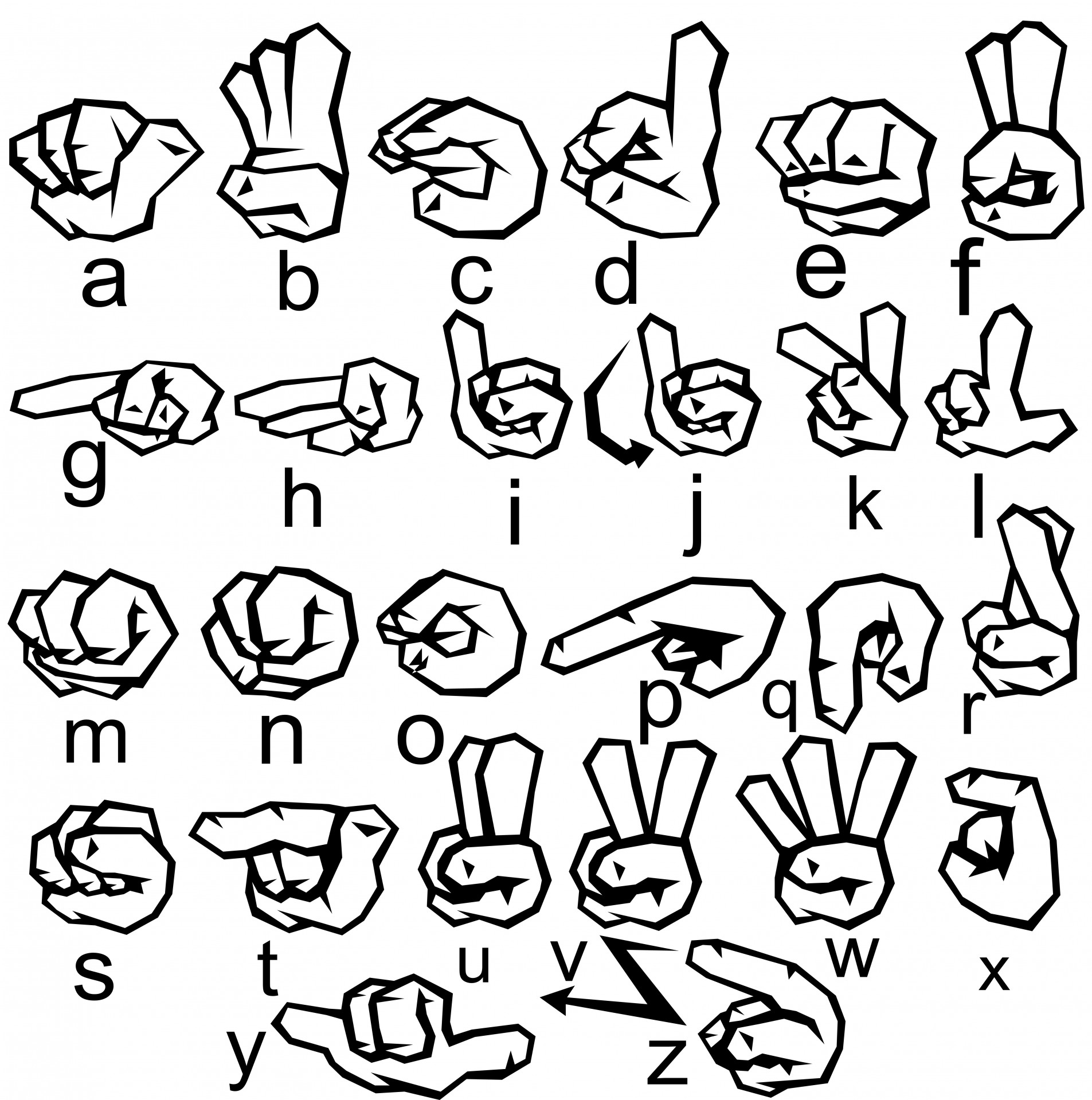American Sign Language (ASL) is more than just handshapes; it’s a rich tapestry of cultural expression. This guide delves into the complexities of signing “asshole” in ASL, exploring its nuanced meanings, ethical considerations, and the importance of cultural sensitivity.
Navigating the Sign for “Asshole”
The sign for “asshole” in ASL exists, but it carries significant weight. Similar to the strongest swear words in spoken English, it’s not used casually. It signifies deep disrespect and can severely damage relationships within the Deaf community, where respect is highly valued. The sign generally involves forming a circle with your thumb and index finger and moving it downwards or outwards from the relevant body area. Variations in movement and starting position exist, but the offensive nature remains consistent.
Critically, the “OK” hand gesture is not the ASL sign for “asshole.” This common misconception needs clarification to prevent unintentional offense. When expressing frustration or anger, consider alternative signs like “bummed” (a downward hand motion), “frustrated” (rubbing the forehead), or “angry” (a sharp downward fist motion). These convey strong emotions without the harshness of “asshole.”
ASL, like all languages, is constantly evolving. Meanings and nuances shift over time and across communities. Continuous learning and engagement with the Deaf community are essential for respectful communication. Just as a few vacation phrases don’t equate to fluency in a spoken language, so too does ASL require deeper understanding beyond basic vocabulary. This discussion about “asshole” exemplifies the broader importance of cultural awareness in ASL.
Do you know your diet can impact your sciatica pain? Certain foods can worsen inflammation and irritate the sciatic nerve. Check out sciatica foods to avoid to make smart choices and alleviate your discomfort.
Signing “Bum” in ASL: Nuances and Alternatives
Signing “bum” in ASL presents unique challenges. Unlike English, ASL lacks a single sign that encompasses all the word’s meanings (lazy person, homeless person, buttocks). The closest equivalent involves a modified “LAZY” sign, performed with emphasis and a negative facial expression—a thud on the chest adds to the negative connotation. However, even this adaptation might not fully capture the intended nuance.
Caution is paramount when signing anything potentially insulting. Direct translations from English can backfire, as seemingly mild insults may be deeply offensive in ASL. Consider your audience and relationship before signing anything negative, erring on the side of caution.
While “bum” and “asshole” are often searched together, their signs and connotations are distinct. “Asshole” carries significantly more aggression and vulgarity. “Bum” might suggest laziness, while “asshole” signifies outright disrespect.
ASL’s richness lies in its contextual nature. Facial expressions, body language, and context heavily influence a sign’s meaning. Ongoing research and discussion within the Deaf community further shape the understanding and usage of these signs. Connecting with Deaf individuals and immersing yourself in Deaf culture offers the best path to understanding ASL’s nuances.
Here’s a summary:
| English Word | ASL Equivalent | Notes |
|---|---|---|
| bum (lazy person) | Modified LAZY sign | Signed emphatically with a thud on the chest; negative facial expression |
| bum (homeless person) | No single direct sign | Other signs and context would be used to describe the situation |
| bum (buttocks) | No single direct sign | Other signs would be used to refer to the specific body part |
| asshole | A distinct sign | Considered more vulgar and offensive than “bum” |
Remember, there’s no perfect one-to-one translation for “bum.” Adapt the “LAZY” sign thoughtfully, considering context and facial expressions. When in doubt, consult a Deaf signer for guidance.
Expressing Yourself: A Guide to Cursing in ASL
Just like spoken languages, ASL allows for expressing more…colorful emotions. This section explores how to convey those passionate feelings with nuance and cultural sensitivity. Remember, ASL involves a combination of handshapes, facial expressions, body language, and movement intensity. These elements work together to convey the full meaning and tone, especially with stronger language.
While learning specific curse signs is possible, understanding the context and cultural nuances is crucial. Dropping an F-bomb at a formal dinner is inappropriate in spoken English, and similar rules apply to ASL. Consider the setting and your relationship with the person before signing anything potentially offensive.
Take the sign for “asshole” as an example. The handshape and movement are consistent, but the way you sign it—your facial expression, speed, and overall vibe—drastically affects the meaning. It can range from playful teasing among friends to a serious insult, depending on the delivery.
Finding Reliable Resources
Several resources can aid your ASL learning journey:
- YouTube: Videos from Deaf creators offer valuable insights into sign execution and nuances.
- Websites like Handspeak: Provide dictionaries of ASL signs, including some for mature vocabulary. However, these may lack full cultural context, so combine them with video resources.
Understanding Cultural Context
Curse signs in the Deaf community serve purposes beyond simply swearing. They can express strong emotions, emphasize points, or even build camaraderie among close friends. Using these signs outside the Deaf community, without a firm grasp of ASL and its culture, risks misinterpretation and offense. It’s like telling a joke in a language you barely understand—it might not land well.
Ethical Considerations: Signing with Respect
Learning curse signs comes with responsibility. Consider your motivations. Are you genuinely interested in Deaf culture or simply seeking shock value? Be mindful of the potential impact of your signs and avoid causing offense, particularly within the Deaf community.
The Dynamic Nature of ASL
ASL is constantly changing. New signs appear, old signs acquire new meanings, and regional variations exist. What’s considered a strong curse in one Deaf community might be less so in another. Continuous learning and cultural sensitivity are vital.
Final Thoughts
Exploring curse signs in ASL offers a fascinating glimpse into Deaf culture. But, like all communication, it requires respect, understanding, and common sense. It’s not just about handshapes; it’s about appreciating the nuances of a language and using it responsibly.
Are you struggling to keep your meat juicy and flavorful? Discover the secrets to perfect smoke time for your next barbecue. Master the art of smoking and tantalize your taste buds with mouthwatering results.
Communicating Needs: Signing “I Have to Go Potty” in ASL
This section provides a clear guide to signing “I have to go potty” in ASL, a crucial phrase for communicating with children, Deaf individuals, or anyone in situations where speaking is difficult. It focuses on the general need to use the restroom, rather than the literal “potty.”
The sign involves making a “T” handshape (fist with extended thumb and index finger, palm facing you) and shaking it slightly up and down, like jiggling a key. This subtle movement hints at urgency. While variations exist, practice and observation of native signers will refine your understanding.
Context influences the sign’s execution. Signing near a child’s body emphasizes their personal need, while a smaller sign might be more discreet in public. Beyond the basic sign, consider related phrases. “Bathroom” or “restroom” offer more mature options, and combining the “potty” sign with “need” emphasizes urgency.
Facial expressions add depth to ASL. A slightly urgent or pleading expression clarifies the message when signing “potty.”
Here’s a quick reference:
| Sign | Description |
|---|---|
| “Potty” (T-hand wiggle) | Dominant hand forms a “T,” shakes slightly up and down. |
| “Bathroom” | Fingerspelling “BATHROOM” or designated sign. |
| “Restroom” | Fingerspelling “RESTROOM” or designated sign. |
| “Need” | Combine with “Potty” to emphasize urgency. |
This table offers a starting point, but remember that ASL is visual and dynamic. Observation and practice are essential. Give it a try, and you’ll be surprised at how quickly you can learn!
- Glass Lunch Box Containers Offer Healthy, Leak-Proof Meal Prep - December 21, 2025
- Glass Bento Boxes Offer a Healthy, Eco-Friendly Lunch Solution - December 20, 2025
- Glass Bento Containers Make Packing Lunch Easier and Healthier - December 19, 2025










